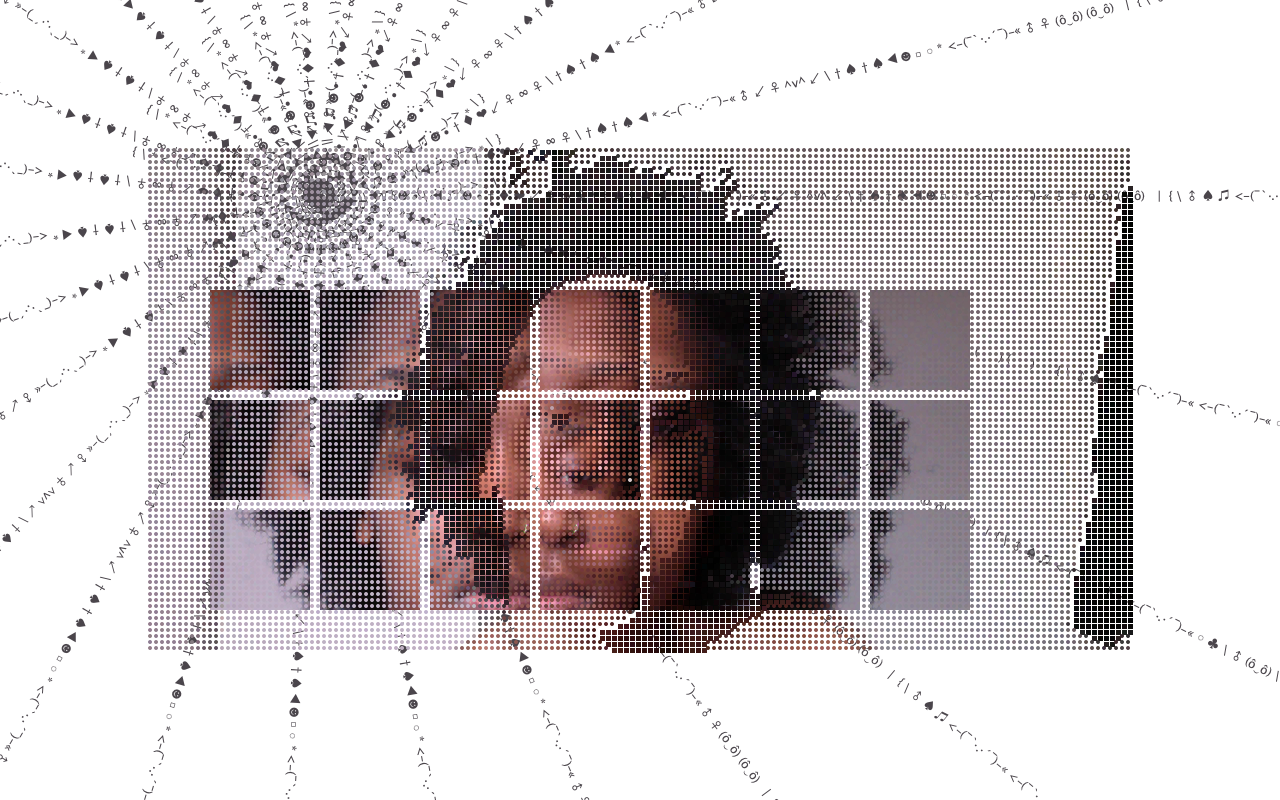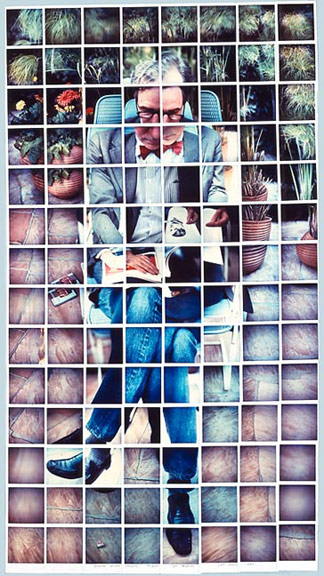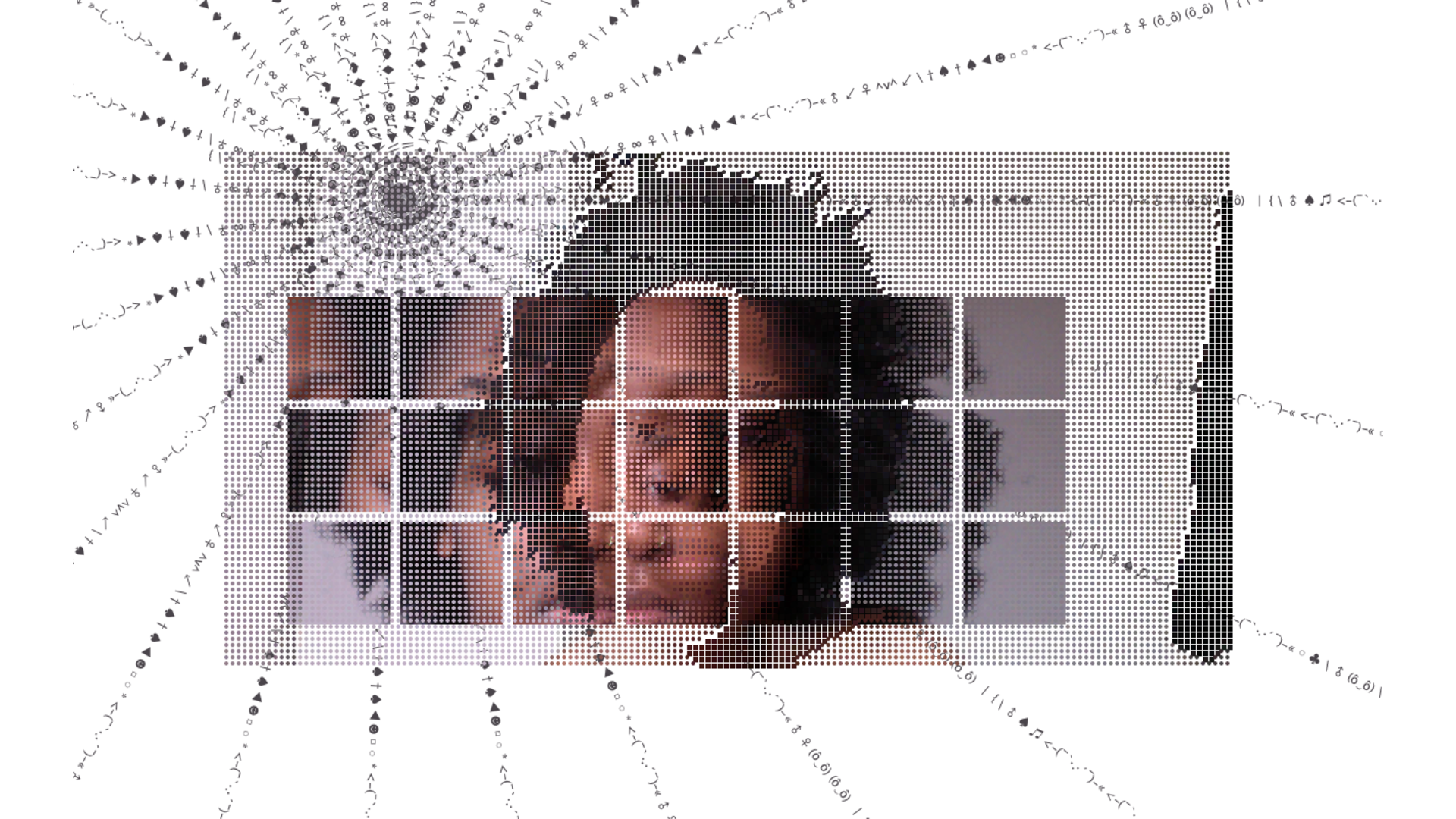S E L F
I almost always wear muted and dull tones; I never ask questions in class, even when I have a burning desire to ask; I scurry away from family photos. I do all of this and more with the hopes of going through life unnoticed, unseen and without a fuss. 'SELF' is a celebration of the exact opposite. I explore themes of revealing/concealing and encoding by putting myself on display.
Produced by: Omolara Aneke
Introduction
I developed a program, similar to a digital vison board, that acts as a gift/reminder to the person(s) in front of the camera. You pass it a phrase or file and it encodes and displays the phrase. Once happy with the view you can snap a shot of it. When the shot is viewed at by others the full scope is not be gathered but when the participant refers to it the full picture is understood.
Concept and background research
My first point of call was to relook at Daniel Shifman's mosaic of Barack Obama using White House photos. He uses an algorithm to match the brightness of each picture to the brightness of the pixels in the Obama image. This led me to Maurizio Galimberti’s portrait of Robert Deniro and David Hockney’s Joiner series, photography that explore photo collages. The idea behind Hockney’s series of works was to simultaneously share multiple perspective, a solution Hockney offered to the ‘lack of time’ problem he faced. This way more information can be imparted, you can express movement and time in a single image. The purposefully fragmented yet connected visuals perfectly embody my being. Smaller pieces that fit together to make a larger object, all equally as important, but depending on your view point your understanding may be hindered. This is true of me.
Technical
Early versions of the ‘SELF’ were heavily inspired by my Mosaic research. I used the video feed to generate tiny screens of moving images that display one big moving image. Manipulating video feed pixel proved difficult. but Through a process of elimination I tested all the filters available in the documentation and found that Tint works well as opposed to Fill. Using the knowledge of working with video Pixels I accumulated, I leaned closer towards Hockney's work in latter versions.
The symbols are generated using an algorithm that turns the individual characters into symbols that have been prechosen and matched to the alphabet. When the letter is chosen, the matching symbol is picked and the words are displayed on the screen encoded.
Accompanying the encoded words are strategically placed boards on the screen in a grid like fashion. They display multiple areas of the webcam, with some screens magnified, giving you a distorted view of yourself depending on how far away from the camera you are. On top of the screens are a tight grid of interchangeable circles and squares that respond to the levels of brightness in the web feed, in places where the pixels are above the threshold circles appear. Pressing key 2,3 or 4 will give you red, blue and green filtering options. Exploring the idea of encoding I passed the algorithm an excerpt from my diary detailing my goals. The chaos created with the swirling words and imagery further emphasises the complexities of self as well as the chaos present on this computational arts journey. Each snap shot works as a visual and tangible reminder to constantly jog your memory to the thoughts in the shot and manifest positive thoughts around you. I conveyed an accurate self-portrait that best describes my current physical being, hopes/dreams and likes. It is a true shot of Omolara aneke in time.
Future development
As a fashion designer, I would like to involve users in the design process a lot more and empower them to be able to make intuitive decisions about the things they pay for. I would like to farther develop this sketch to allow users to design prints based on what they capture through the lenses. I will increase the interactively and allow for more colour/ design/font settings, like increase or decrease image resolutions, add a filter, e.g. blurred or pixelated, increase or decrease the size elements and chose how to repeat the pattern for an item of their choice.
References
Harris, R. (2012) ‘David Hockney – Photography will never equal painting!’, Photography and Music, 3 March. Available at: https://photomuserh.wordpress.com/2012/03/04/david-hockney-photography-will-never-equal-painting/(Accessed: 01 January 2020).
list - Morse Code Conversion using Java(no date) Stack Overflow. Available at: https://stackoverflow.com/questions/15101912/morse-code-conversion-using-java/1510196(Accessed: 01 January 2020).
Maurizio Galimberti mosaics polaroid portrait compositions(2014) designboom | architecture & design magazine. Available at: https://www.designboom.com/art/maurizio-galimberti-mosaics-polaroid-portrait-compositions-05-31-2014/(Accessed: 01 January 2020).
Print Processing.org(no date). Available at: https://processing.org/tutorials/print/(Accessed: 12 January 2020).
Photo Mosaic with White House Social Media Images - Coding Challenge #49 · The Coding Train(no date). Available at: https://thecodingtrain.com/CodingChallenges/049-obamamosaic.html(Accessed: 27 December 2019).
10.7: Painting with Pixels - Processing Tutorial(no date). Available at: https://www.youtube.com/watch?v=NbX3RnlAyGU&list=PLRqwX-V7Uu6YB9x6f23CBftiyx0u_5sO9&index=7(Accessed: 01 January 2020).


































































